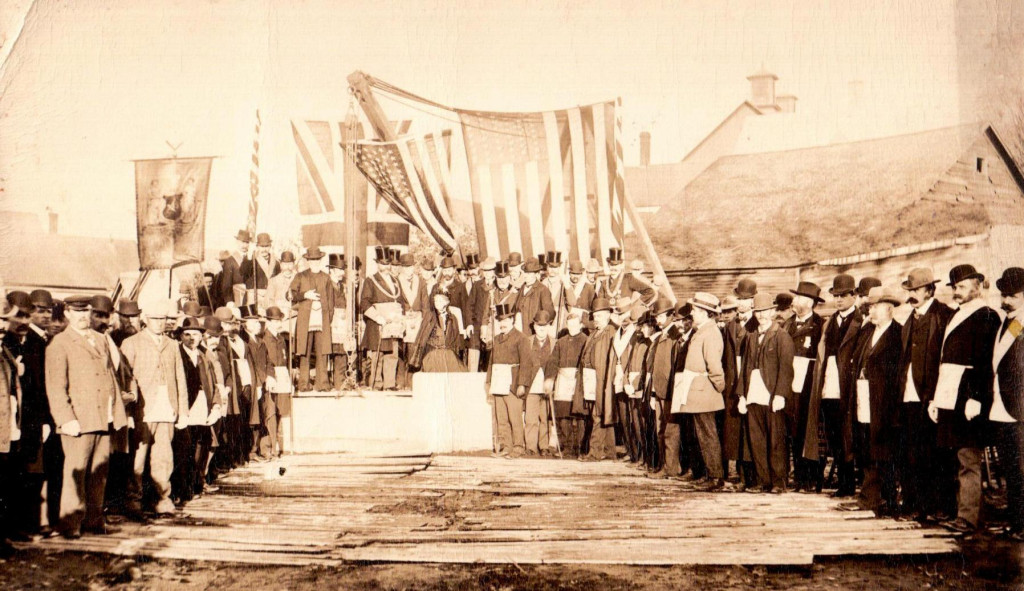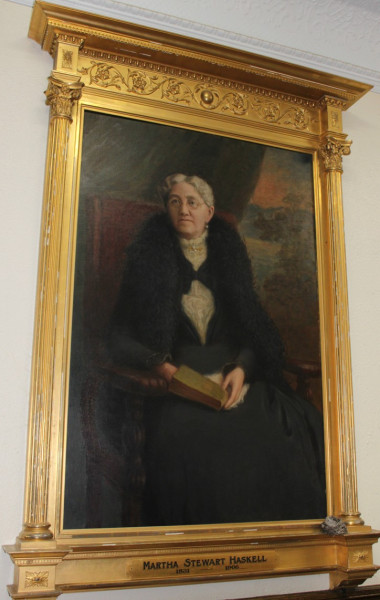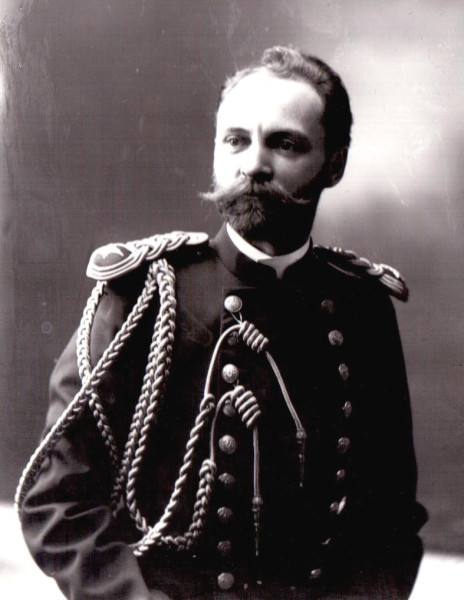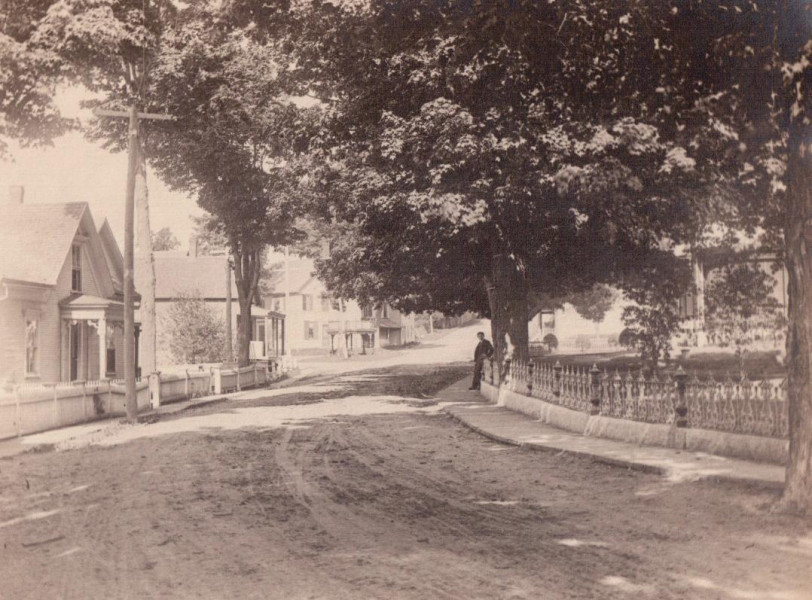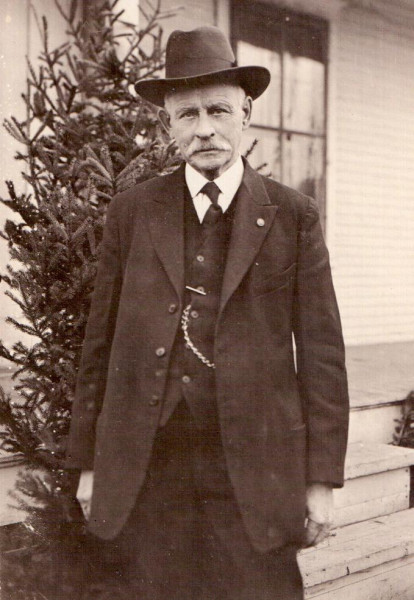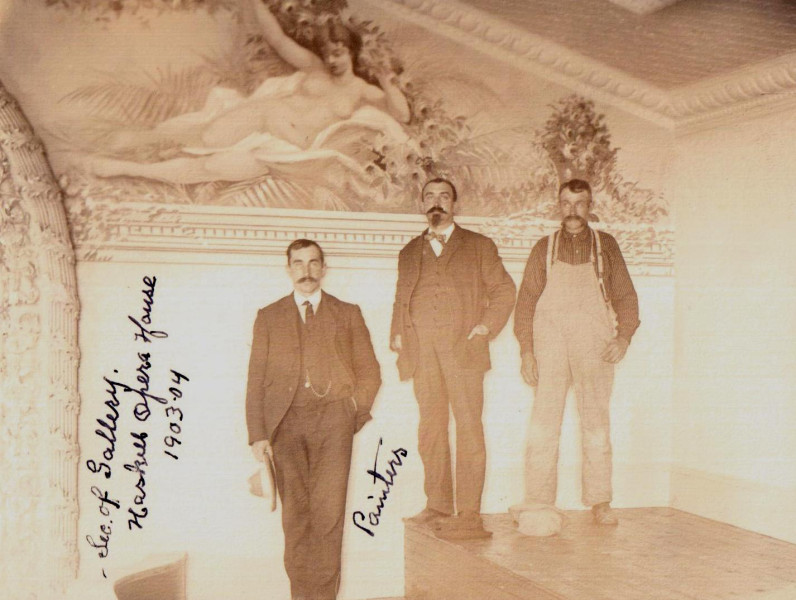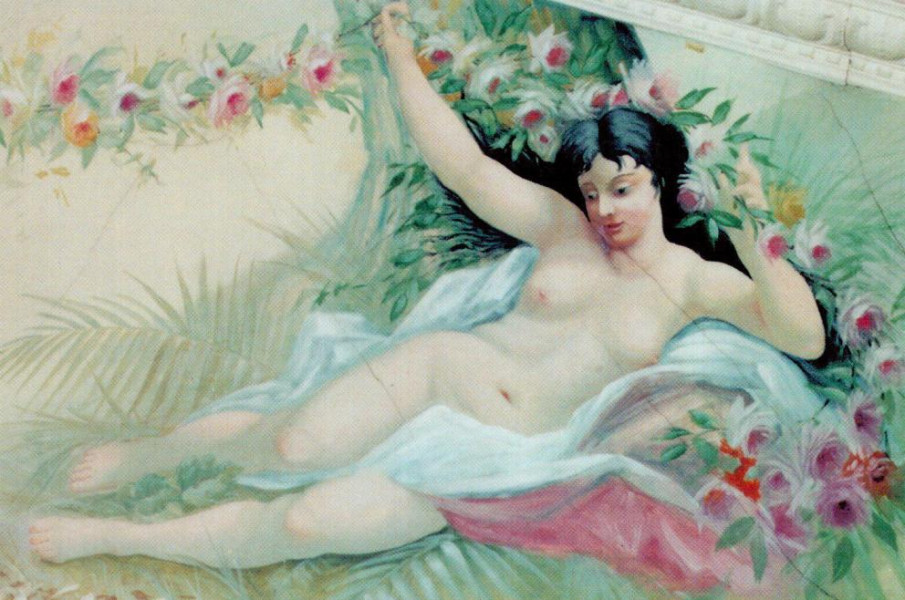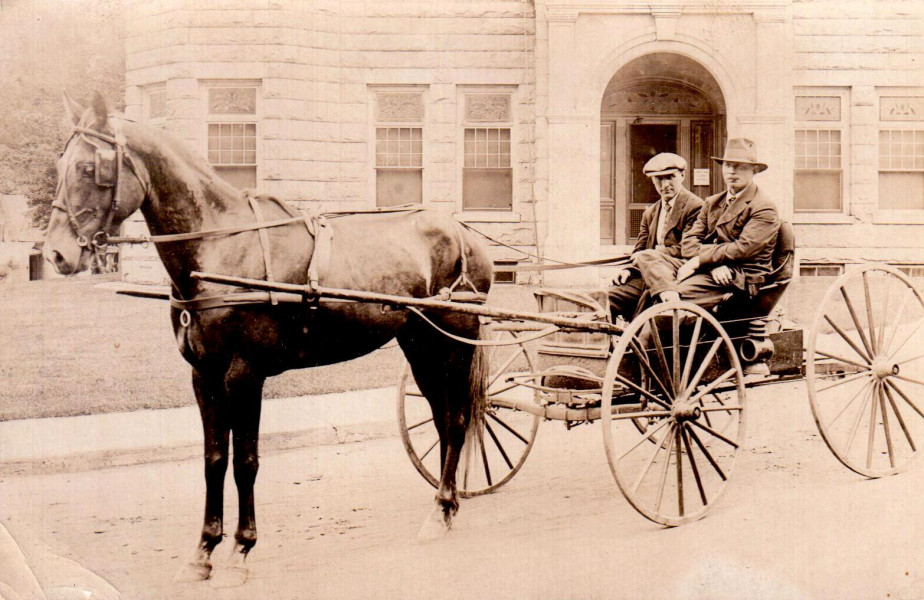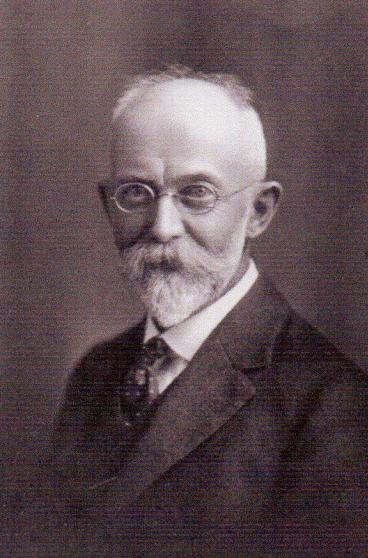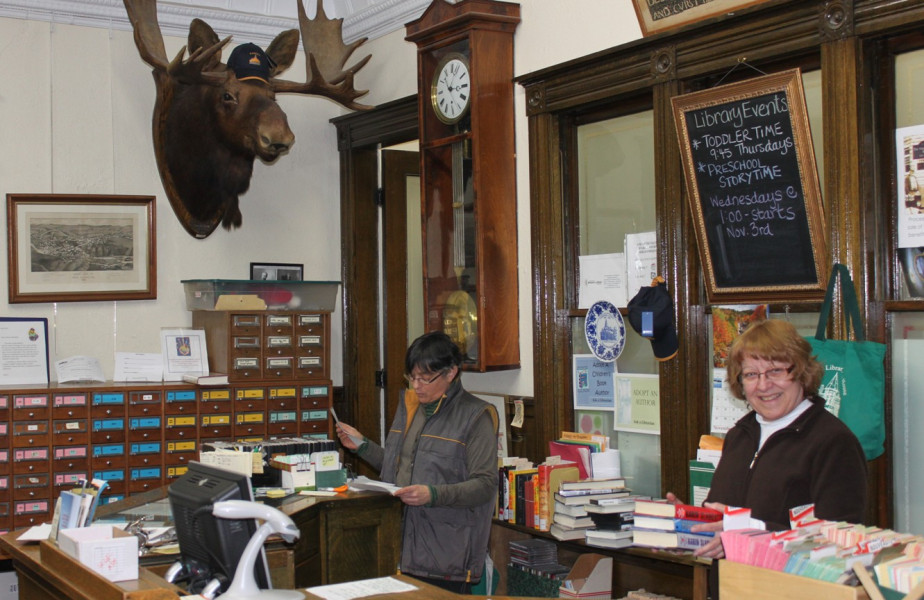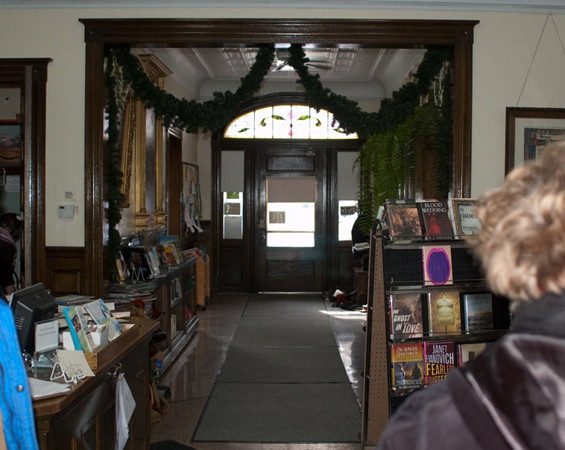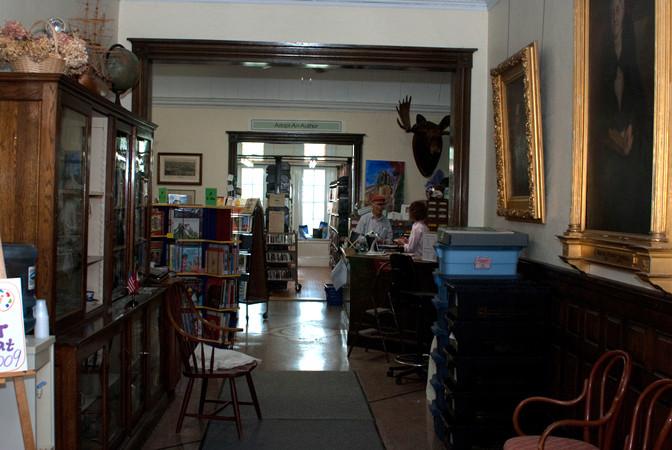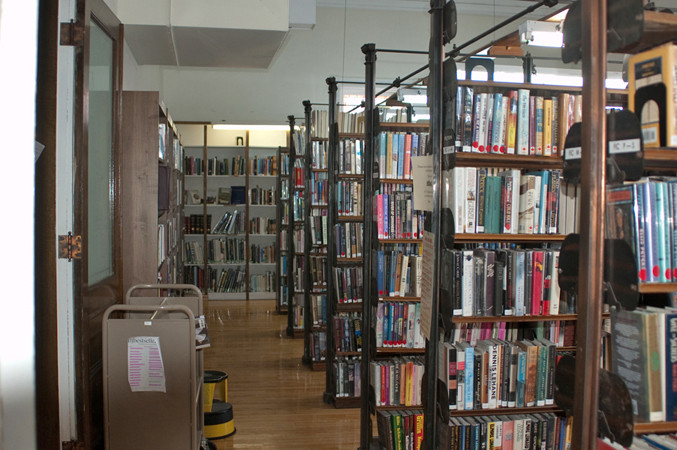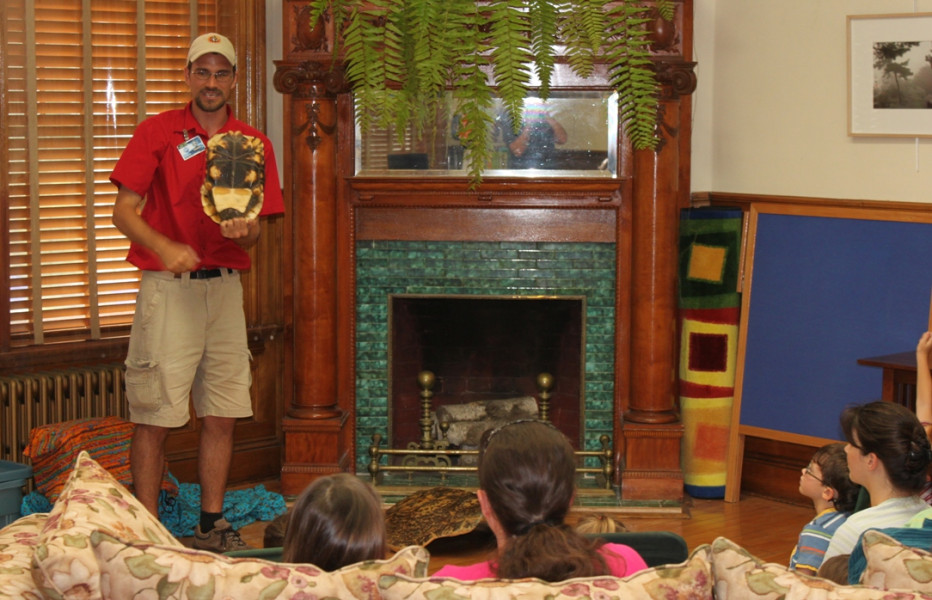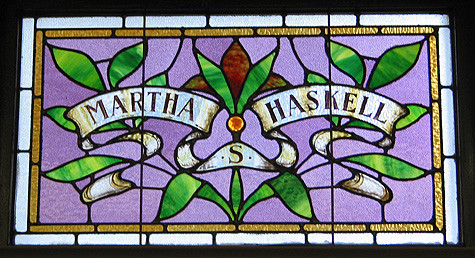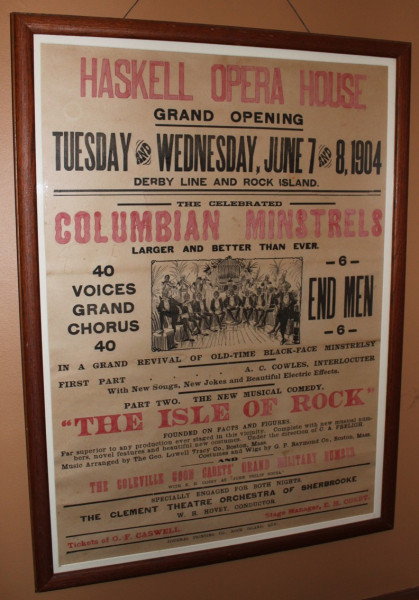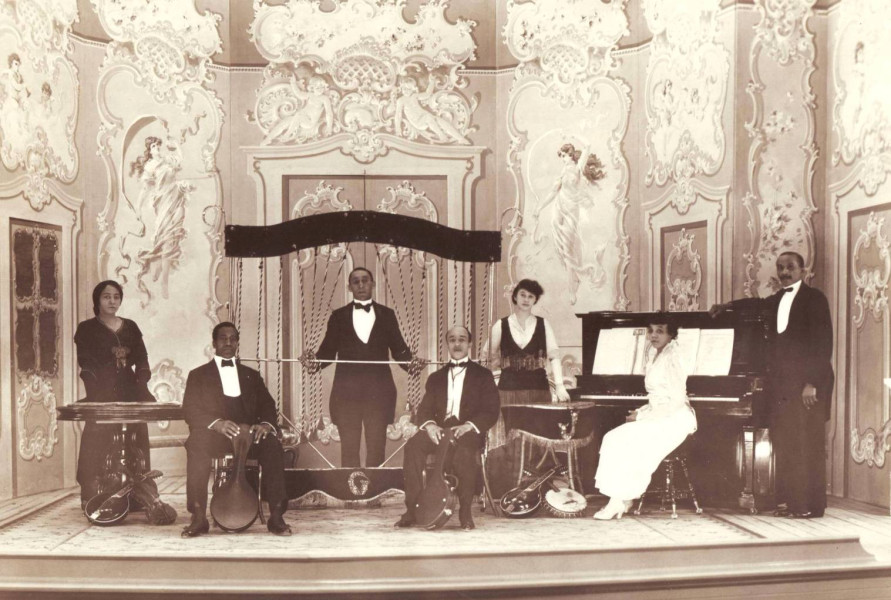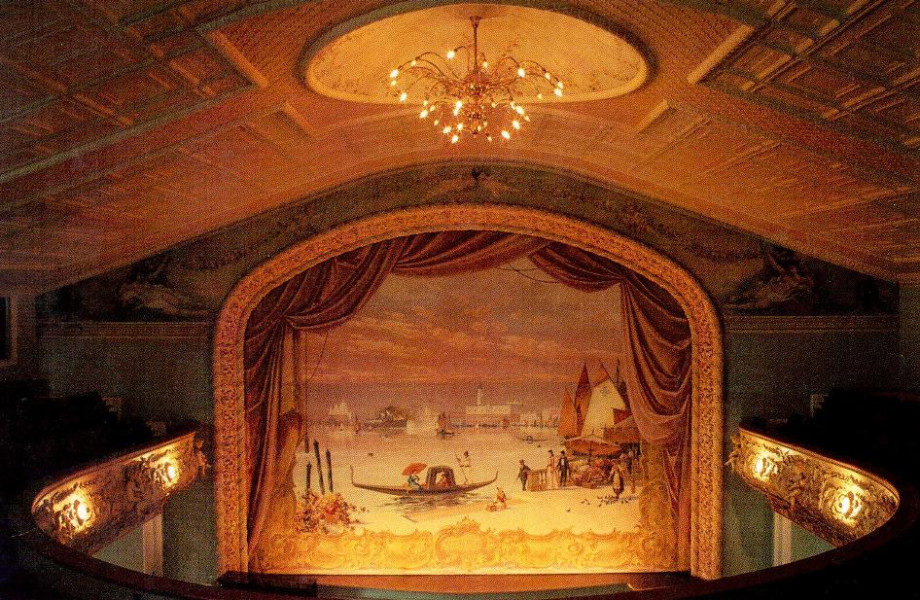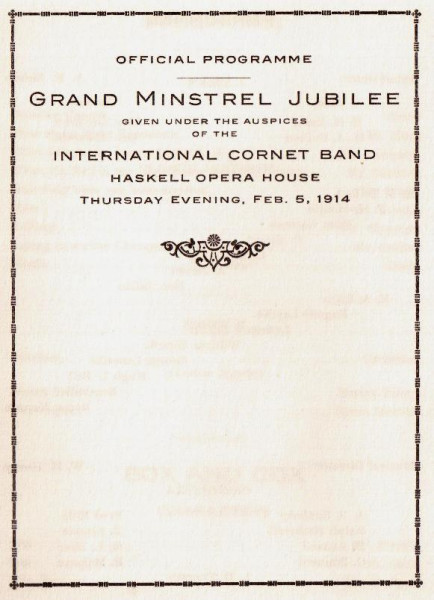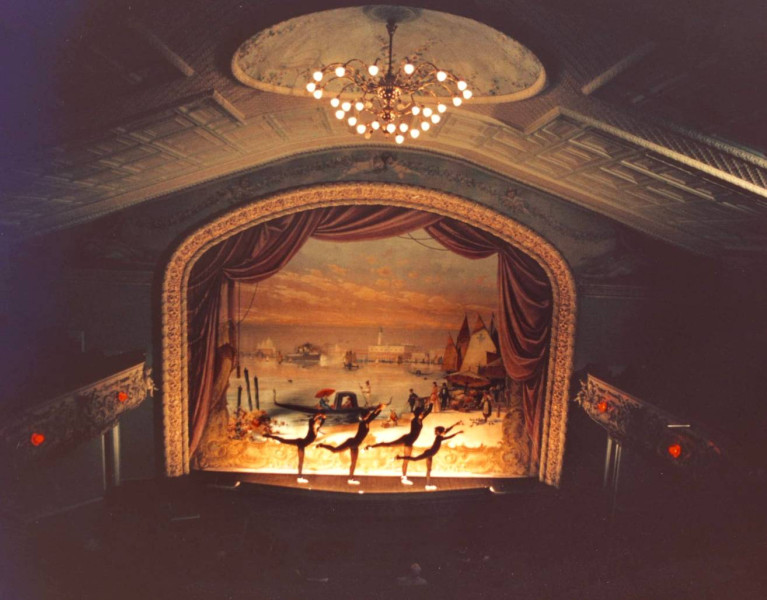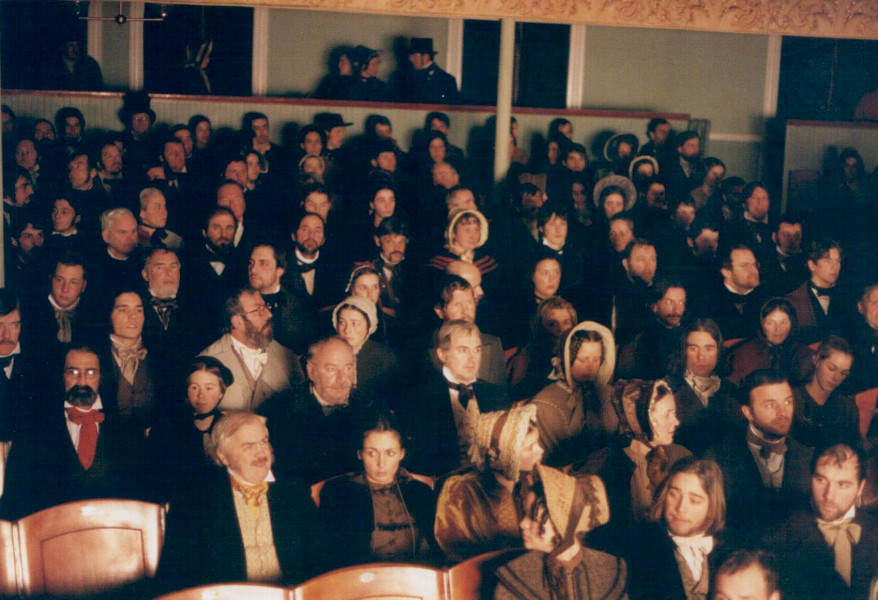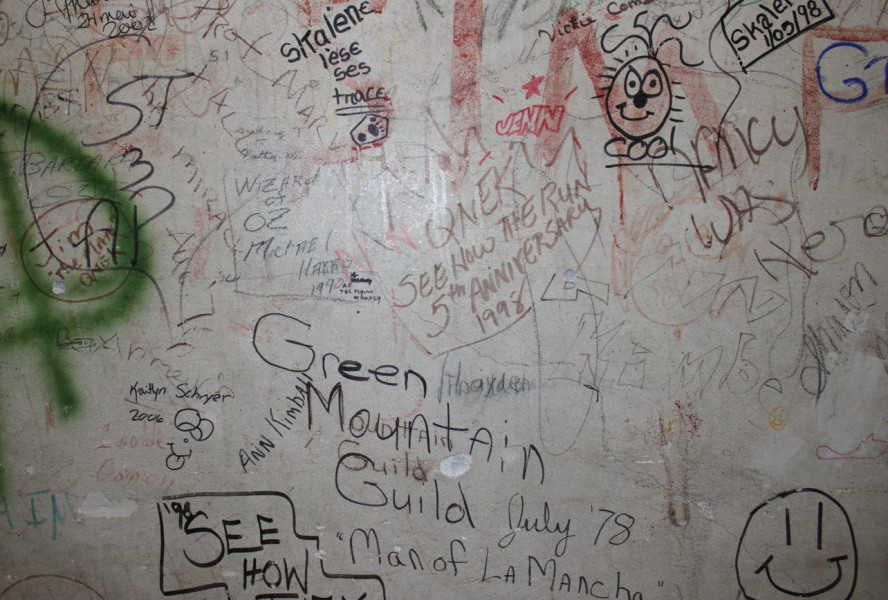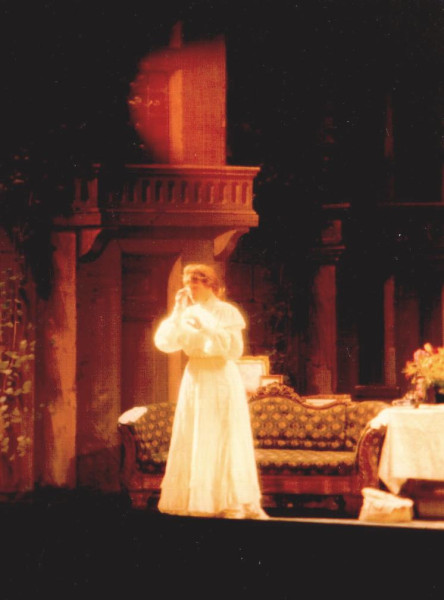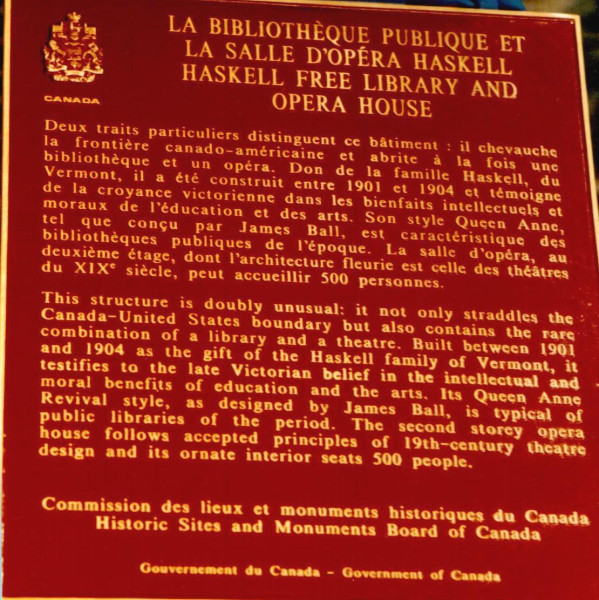The Haskell Free Library and Opera House, located in Stanstead, Quebec, and Derby Line, Vermont, was constructed intentionally astride the boundary line separating Canada from the United States. Over the past century, this unusual institution has attracted visitors from all around the world.
The subject of an ongoing fascination on the part of the media, the Haskell has been featured on network news around the world and in publications such as Life Magazine, Canadian Geographic, the New York Times, Ripley’s Believe It or Not, and countless others. The Haskell has been classified a historic site by the governments of Canada, the United States, and the Province of Quebec.
The Haskell Free Library and Opera House was the gift of Martha Stewart Haskell and her son, Colonel Horace Stewart Haskell. It was dedicated to Mrs. Haskell’s late husband, Carlos, a prominent merchant. The family’s aim was to provide the border communities with a centre for learning and cultural enrichment. The opera house, located on the second floor of the building, also had a practical purpose. According to the original charter, dated 1908, it was to be “forever managed and used for the support and maintenance” of the library, located downstairs.
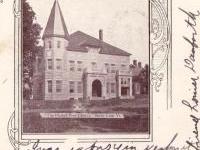 The cornerstone of the Haskell was laid on October 15, 1901 by members of Stanstead’s Golden Rule Lodge, assisted by prominent Masons from both sides of the border, including Col. Haskell himself. The building was designed by Stanstead architect James Ball and his partner, Gilbert Smith, of Boston. Construction was supervised by Nathan Beach, of Georgeville, Quebec. After a number of delays, the building was completed in 1904 at an estimated cost of $50,000 – a princely sum for that time.
The cornerstone of the Haskell was laid on October 15, 1901 by members of Stanstead’s Golden Rule Lodge, assisted by prominent Masons from both sides of the border, including Col. Haskell himself. The building was designed by Stanstead architect James Ball and his partner, Gilbert Smith, of Boston. Construction was supervised by Nathan Beach, of Georgeville, Quebec. After a number of delays, the building was completed in 1904 at an estimated cost of $50,000 – a princely sum for that time.
The Haskell was long said to be a scale replica of the Boston Opera House. This, however, has proven to be quite untrue. The building is, in fact, unique. Nowhere else in the world can one sit in an opera house that is literally split in two by an international border, where most of the audience sits in the U.S. to watch a show on a stage in Canada. Nowhere else can one find a library whose door is in the U.S., but whose check-out desk desk is in Canada.
The Haskell’s two street facades are splendid examples of late Victorian architecture, and combine elements of various building styles.
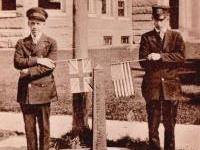 In the library, there are fireplaces and artwork on the walls. In the opera house, upstairs, with its decorative proscenium arch, cherubs, murals, and splendid scenery, the mood is one of gaiety. The drop curtain, scenery, props, and stage machinery are all original and well preserved. The scenery is believed to be the only surviving work of the celebrated Boston artist, Erwin LaMoss.
In the library, there are fireplaces and artwork on the walls. In the opera house, upstairs, with its decorative proscenium arch, cherubs, murals, and splendid scenery, the mood is one of gaiety. The drop curtain, scenery, props, and stage machinery are all original and well preserved. The scenery is believed to be the only surviving work of the celebrated Boston artist, Erwin LaMoss.
The opera house has been known for its acoustics since the Columbian Minstrels performed an old-fashioned black-face routine on opening night on June 7, 1904. Over the past century, the Haskell has hosted an array of performing artists and public speakers.
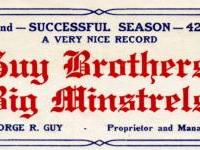 Hundreds of performers have left their signatures on the dressing room walls, and these are preserved to this day. The opera house has never been the money-maker the Haskells intended it to be, but it has certainly provided the border communities with some interesting entertainment.
Hundreds of performers have left their signatures on the dressing room walls, and these are preserved to this day. The opera house has never been the money-maker the Haskells intended it to be, but it has certainly provided the border communities with some interesting entertainment.
From 1993 to 1997, the opera house was closed due to government requirements involving handicapped access and fire safety. After a year of construction, and the addition of sprinklers, an elevator, and a fire escape tower – all respecting the historic character of the building – the opera house was reopened amid much fanfare.
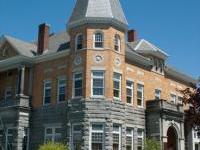 Since 1997, a full schedule of shows has been held in the opera house each season, from the spring through the fall.
Since 1997, a full schedule of shows has been held in the opera house each season, from the spring through the fall.
The trustees and staff of the Haskell are doing everything in their power to make sure that this wonderful old institution continues to serve the public well into the distant future.
The expense of running the building, however, is proving to be a challenge, and the Haskell is no longer shy about asking the public for help. The Haskell is a registered non-profit organization, and all donations are tax-deductible. In Canada, donations may be made out to the Haskell Library Foundation, 1 Church St., Stanstead, QC, J0B 3E2. In the U.S., they may be made out to Haskell Free Library Inc, P.O. Box 337, Derby Line, VT 05830. All donations are welcome and will be acknowledged on the wall of the library. Donors of over $1,000 will have their names etched in granite.
